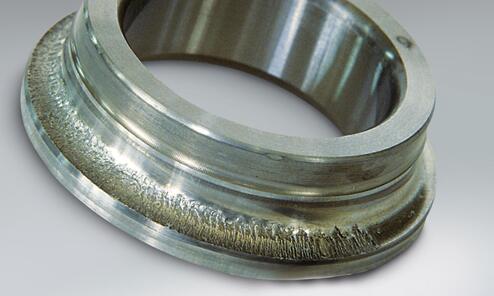Newsroom
How to deal with damage to precision angular contact ball bearings?
2022-03-09Dealing with damage to precision angular contact ball bearings requires a systematic approach to identify the cause, prevent further damage, and implement corrective actions. Here are the steps you should follow:
1. Angular contact ball bearing inspection and diagnosis
• Visual Inspection
Surface Examination: Look for signs of wear, discoloration, scoring, or pitting on the raceways and rolling elements.
Housing and Shaft: Inspect the bearing housing and shaft for misalignment, scoring, or wear.
• Noise Inspection
Noise Check: Listen for unusual noises during operation, such as grinding, squealing, or knocking, which can indicate bearing damage.
• Vibration Analysis
Vibration Patterns: Use vibration analysis equipment to detect abnormal vibration patterns that can indicate specific types of damage.
2. Identifying Common Types of Damage
• Wear and Tear
Causes: Misalignment, improper lubrication, contamination, or excessive load.
Solution: Ensure proper alignment, use the correct type and amount of lubricant, and maintain a clean operating environment.
• Corrosion
Causes: Moisture or chemical exposure.
Solution: Use bearings with appropriate corrosion-resistant coatings and ensure a dry, controlled environment.
• Fatigue
Causes: Repeated stress cycles leading to spalling or flaking of material.
Solution: Verify that the bearing is not overloaded and ensure proper maintenance and lubrication.
• Contamination
Causes: Dirt, dust, or other foreign materials entering the bearing.
Solution: Improve sealing mechanisms, maintain a clean workspace, and use clean lubricants.
3. Preventive Measures
• Proper Lubrication
Type of Lubricant: Use the manufacturer-recommended lubricant for your specific bearing type.
Lubrication Interval: Follow the recommended intervals for re-lubrication and ensure correct lubricant quantity.
• Proper Handling and Installation
Handling: Avoid contamination and damage during handling by using clean gloves and tools.
Installation: Use appropriate tools and methods to avoid damaging the bearing during installation. Ensure correct alignment and avoid over-tightening.
• Monitoring and Maintenance
Regular Inspections: Implement a regular inspection schedule to catch early signs of wear or damage.
Condition Monitoring: Use advanced condition monitoring techniques like vibration analysis, thermography, and acoustic emission monitoring.
• Address Root Causes
Alignment Issues: Correct any misalignment in the bearing housing or shaft.
Lubrication Problems: Adjust lubrication practices to ensure proper bearing performance.
Contamination Control: Improve sealing and cleanliness to prevent foreign material ingress.
By systematically addressing these aspects, you can effectively deal with damage to precision angular contact ball bearings and prolong their operational life.
For more detailed info about the specific issues, don’t hesitate to contact QIBR.



